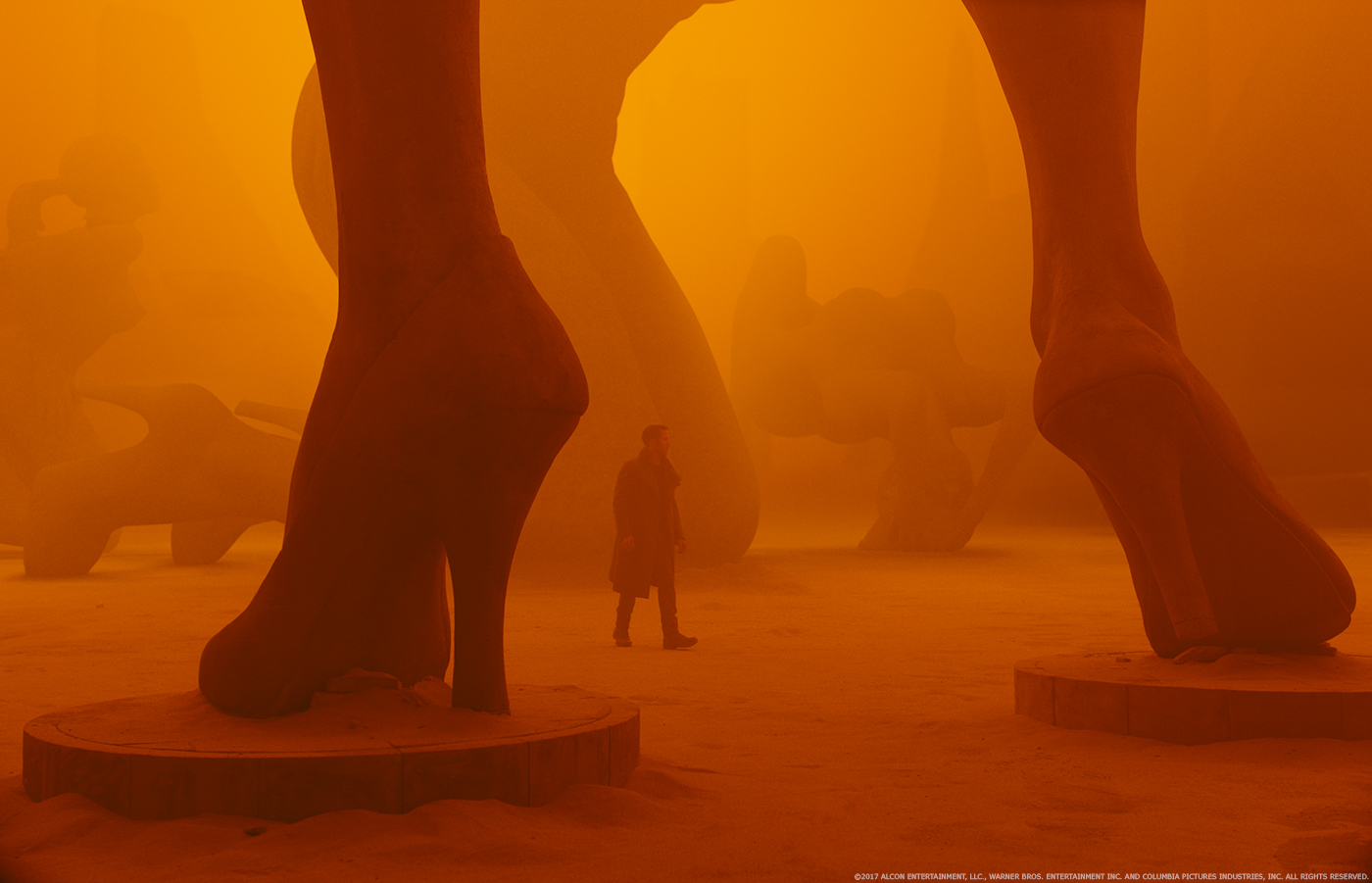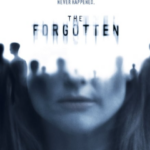Blade Runner: 2049 (2017)
Today’s guest review is by Phil Jeffery.
Blade Runner: 2049 is the 2017 sequel to 1982’s sci-fi classic Blade Runner. Set in Los Angeles in the far-distant year of 2019, the original Blade Runner follows Rick Deckard (Harrison Ford) as he tracks down rogue replicants – clones manufactured for slave labor by the Tyrell Corporation – but in the process falls in love with a top-of-the-line replicant named Rachel (Sean Young).
Thirty years later, Deckard and Rachel have disappeared, the Tyrell Corporation has gone out of business, and a new mogul – Niander Wallace (Jared Leto) – manufactures a new line of replicants that are more obedient and useful for more varied purposes. But most importantly, the world has gone barren since 2019. We learn from the opening titles that, after an ecological disaster in the mid-2020s, crops no longer grow. Food only comes from Wallace-engineered synthetic farms.

It’s also heavily implied that humans have gone barren by 2049. Their barrenness is self-inflicted, thanks to pornography, which has evolved beyond confinement to screens, but not beyond recognition. Among Wallace Co.’s product line is Joi, a holographic and fully-customizable live-in girlfriend, advertised around L.A. on hundred-foot-tall interactive billboards featuring nude women and the slogan “everything you want to see, everything you want to hear.” Wallace also manufactures “pleasure model” replicants, and we meet several replicant prostitutes on the streets of L.A. These replicants are, of course, as sterile as the ground beneath them.
Blade Runner: 2049 takes us to the epicenter of the ecological and human disasters responsible. About two-thirds of the way through the movie, we take a trip to what remains of Las Vegas, a ghost town destroyed by a dirty bomb sometime before the events of the film. It bears the marks of the sexual hedonism that still defines its world. We wander in between the legs of colossal statues of women in provocative poses, wearing nothing but high heels – the Ozymandian rulers of a world falling apart, this futuristic world with no hope of a future.

The whole world, and (almost) everyone in it, is barren. And director Denis Villeneuve accentuates this barrenness with the visuals and pacing of the movie. It moves us slowly and deliberately across bare wastes and abandoned skyscrapers and endless piles of junk. Blade Runner: 2049 is nearly three hours long, and it takes every second it can to show off its stark but not yet empty world.
Our tour guide in this world is KD6-3.7 (Ryan Gosling), K for short, a Wallace-brand replicant and detective with the LAPD tasked with hunting down the obsolete and rebellion-prone Tyrell-brand replicants. The movie opens with K en route to a synthetic farm, where a rogue replicant (Dave Bautista) farms grubs for protein. After “retiring” the replicant, K stumbles upon a grave marked by a tiny uprooted flower (the only green thing in sight). Inside lies an impossibility: a Tyrell-brand replicant who, an LAPD autopsy reveals, died giving birth.
One birth revolutionizes a barren world. K’s boss sees in it an existential threat to the social order. Wallace sees it as the means to unstoppable interplanetary expansion. And the more K uncovers, the more revolutionary it seems to him as well. His search for this child challenges his own sense of self, drawing him deep into memories he once disregarded as assembly-line implants and revealing new truths and falsehoods in his every relationship.
The closest of his relationships is to his Joi (Ana de Armas), who is all the more interesting for being a product, not a person. Were she a human being, she would be a forgettable cookie-cutter love interest character who exists only to say affirming things to our hero. But as a hologram, made precisely to say affirming things to our hero (“Everything you want to see, everything you want to hear”), she is instead one of the most thought-provoking parts of the movie, elevated by the concept behind her creation and the visuals employed to bring her into the world.
One standout scene makes the most of both. Joi invites a replicant prostitute named Mariette (Mackenzie Davis, who sci-fi fans may recognize as another not-quite-real character from Black Mirror’s “San Junipero” episode) over to K’s apartment for Joi to use as a physical body with which K can be physically intimate. Joi superimposes herself over Mariette, but the synchronization is not quite perfect. We watch K kissing a figure that wavers back and forth between two different body languages, two different ideas of intimacy. The scene leaves the apartment as the characters begin to undress, cutting outside the building to an ad for Joi – we are not allowed to forget for one second that, though subtle and visually mesmerizing, this superposition of pornography, prostitution, cohabitation, and objectification is ultimately fake, that it falls short somehow of the real thing.
Questions of realness underlie the drama of Blade Runner: 2049. The mystery of the main plotline revolves around whether K’s memories are real. Likewise, internal and interpersonal drama arises from the realness or fakeness of each character. For instance, when Mariette first realizes that K is a Joi customer, she remarks sarcastically “Ohhh, you don’t like real girls.” Her split-second facial expression accompanying this line hints at the exasperation of today’s flesh-and-blood women competing with pre-packaged sex; it’s made all the sadder by the unavoidable question of whether she is a “real girl” herself.
At the very end, Blade Runner: 2049 gives its answer to all the fakeness and barrenness. Like Villeneuve’s previous movie, Arrival, it puts all its confidence in a simple presentation of the parent-child relationship. There’s more to this world than sex – we see glimpses of its politics, economics, ecology, and culture – but this one relationship is the possible best answer to its many problems. Villeneuve’s faith in family is summed up by Bautista’s replicant-farmer right at the beginning: asked why Tyrell-brand replicants fight for their freedom while Wallace-brand replicants do not, Bautista replies simply to K, “You’ve never seen a miracle.” The next two and a half hours slowly but surely bring to light the miracle he has in mind.
Blade Runner: 2049 is rated R, and for good reason. For dramatic and thematic purposes, a lot of female nudity is involved, as is some brief but bloody violence and occasional foul language. At no point does it revel in the sexual exploitation it shows, but it does show such exploitation, and demands a mature and patient audience. Such an audience will find its world familiar at points and compelling throughout.
Denis Villeneuve directed Blade Runner: 2049. Hampton Francher and Michael Green wrote the screenplay, based on characters by Philip K. Dick. Music was by Benjamin Wallfisch and Hans Zimmer, cinematography by Roger Deakins, editing by Joe Walker, and production design by Dennis Gassner.
— Philip Jeffery is a Public Interest Fellow in Washington, D.C.













